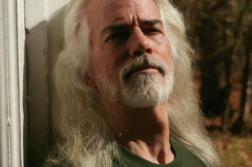THE 25th Sundance Film Festival faced a few big obstacles this year. Due to the crashing currency, corporate sponsorship was down. Fewer films sold, fewer parties were held. The festival ran January 15–25, and Obama’s inauguration on January 20 had most of the city’s occupants focused on reality TV of the highest order, not independent cinema, for much of the day. Since the festival is held in Utah, the center of the Mormon Church, many people announced that they would boycott the state in protest over the Church’s support of California’s Prop. 8, a measure passed in November banning same-sex marriages in California. Thus it was a silver anniversary that could have gone sour, but Sundance 2009 managed to keep the seats filled. The streets may have seemed empty, but the theaters saw an increase in ticket sales over last year.
For John Cooper, director of programming for the festival, it was a triumph against the economics of the times. Cooper, who is also the creative director at the Sundance Institute, has seen a lot of changes in Sundance over his nineteen years with the festival. Among these changes has been a gradual growth in the contribution of GLBT filmmakers who’ve come through the festival over the years. Cooper, who is an out gay man, would occasionally be blamed for queer favoritism in the programming, though there was never any evidence of this. Now, with the sudden departure of Geoffrey Gilmore as the director of Sundance (he moved to Tribeca Enterprises in February), second-in-command Cooper has become the head of the most important film festival in the country.
I interviewed Cooper face-to-face at the Sundance Film Festival last January.





